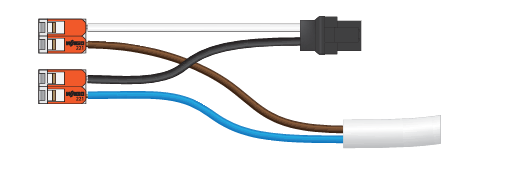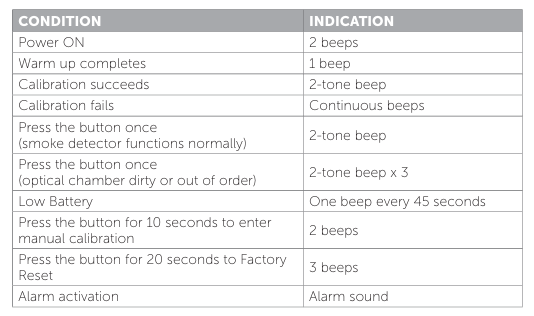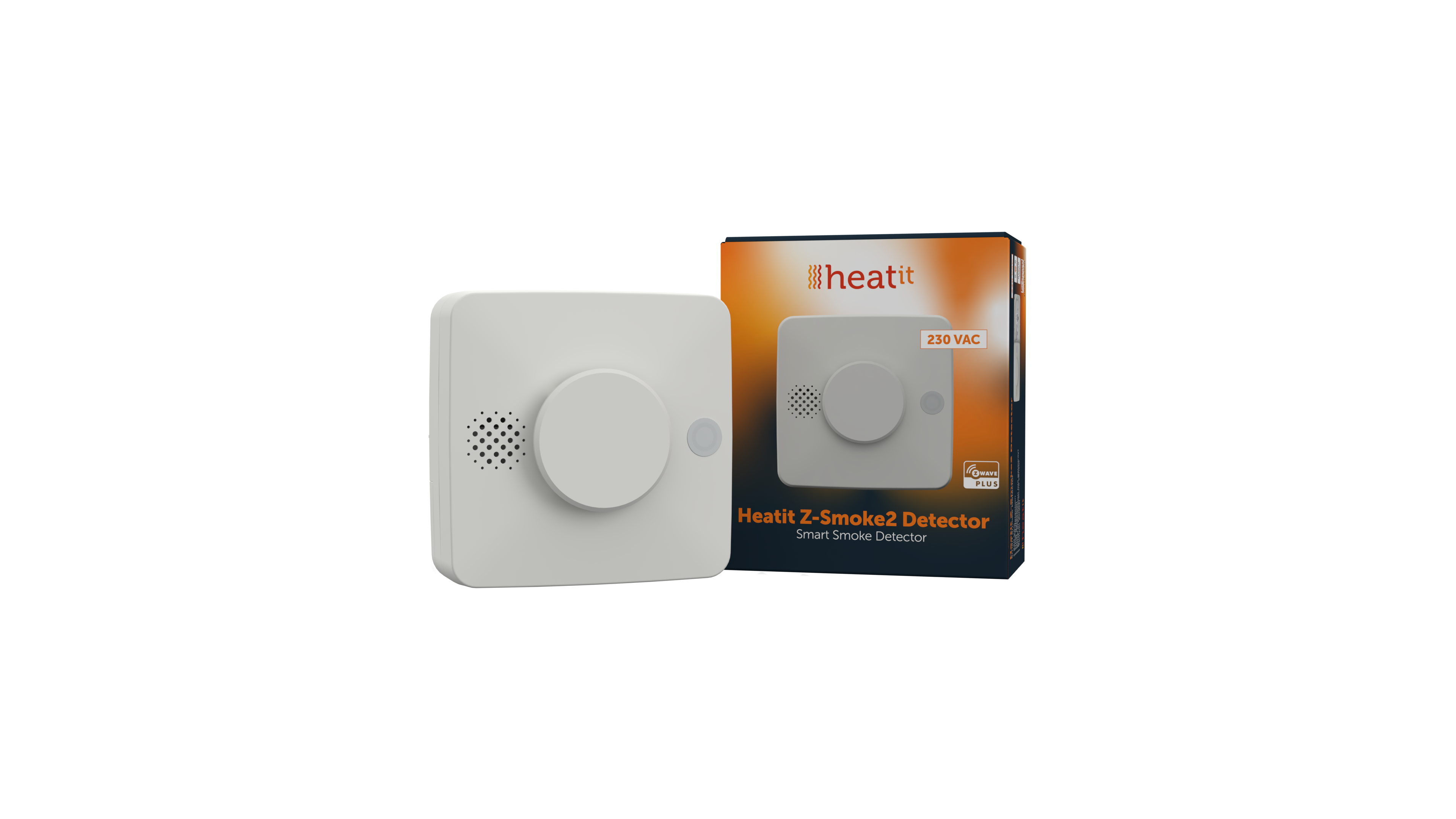Quickstart
This is a
Important safety information
Please read this manual carefully. Failure to follow the recommendations in this manual may be dangerous or may violate the law. The manufacturer, importer, distributor and seller shall not be liable for any loss or damage resulting from failure to comply with the instructions in this manual or any other material. Use this equipment only for its intended purpose. Follow the disposal instructions. Do not dispose of electronic equipment or batteries in a fire or near open heat sources.What is Z-Wave?
Z-Wave is the international wireless protocol for communication in the Smart Home. This device is suited for use in the region mentioned in the Quickstart section.
Z-Wave ensures a reliable communication by reconfirming every message (two-way communication) and every mains powered node can act as a repeater for other nodes (meshed network) in case the receiver is not in direct wireless range of the transmitter.
This device and every other certified Z-Wave device can be used together with any other certified Z-Wave device regardless of brand and origin as long as both are suited for the same frequency range.
If a device supports secure communication it will communicate with other devices secure as long as this device provides the same or a higher level of security. Otherwise it will automatically turn into a lower level of security to maintain backward compatibility.
For more information about Z-Wave technology, devices, white papers etc. please refer to www.z-wave.info.
Product Description
The Heatit Z-Smoke 2 is an intelligent smoke and heat detector for 230V connection that integrates seamlessly into Z-Wave-based smart home systems. With its multi-sensor technology, it reliably detects smoke, heat, and temperature changes while reducing false alarms through intelligent filtering. Thanks to the backup battery, protection is ensured even during power outages. Ideal for anyone who wants to combine safety with smart home convenience.
Prepare for Installation / Reset
Please read the user manual before installing the product.
In order to include (add) a Z-Wave device to a network it must be in factory default state. Please make sure to reset the device into factory default. You can do this by performing an Exclusion operation as described below in the manual. Every Z-Wave controller is able to perform this operation however it is recommended to use the primary controller of the previous network to make sure the very device is excluded properly from this network.
Reset to factory default
This device also allows to be reset without any involvement of a Z-Wave controller. This procedure should only be used when the primary controller is inoperable.
Press and hold the Function button for 20 seconds to factory reset. The Smoke detector will first beep after 7 seconds to indicate that it is being reset. Final confirmation of reset with beeps after 20 seconds.
Installation
Heatit Z-Smoke2 Detector uses AC 100-230VAC as its power source and has three rechargeable batteries as its backup battery in case of power failure.1. Switch off the mains voltage (disable the fuse).
2. Two Wago 221 Splicing Connectors are provided. Take out one connector. Pull the lever up and insert the white wire.
3. Push the lever back down. The transparent housing allows you to check if the wire is connected properly. Make sure the wire is tightly held in place before you proceed
4. Repeat Steps 2 and 3 to insert the black wire. Inserting the two wires to the same side (right) of the two connectors provides an easier installation in the following steps.
5. Insert the AC wires to the two connectors respectively. Use a screwdriver to turn the Battery Switch to ON position (right side); the rechargeable battery will begin to charge. 
Warm-up: After the power is supplied, the smoke detector will sound 2 short beeps, and the Red LED will start to flash to indicate the detector is performing a 1-minute warm-up.
Calibration: When the 1-minute warm-up is over, one short beep will sound to indicate the smoke detector is starting the calibration process. The smoke detector will emit a 2-tone beep to indicate the calibration is completed, and the Red LED will turn off. The smoke detector will emit continuous beeps to indicate calibration failure. Disconnect the power supply and then re-connect it after a pause of at least 30 seconds to retry warm-up. After warm-up and calibration are complete, proceed to add the smoke detector into the primary controller. Please refer to chapter “Add/Remove” for details.The smoke detector is designed to be mounted on the ceiling. The ideal mounting height for the smoke detector is 3 meters. Mounting above 3 meters can affect detection performance. A mounting sheet is provided to help users correctly install the smoke detector. The mounting sheet has a perforated design for mounting holes and the mounting bracket, and can be removed from the mounting surface easily after installation. It is recommended that the installation site be in the center area of the ceiling. Do not locate the detector in the following locations:
- The Kitchen – Smoke from cooking might cause an unwanted alarm.
- Near a ventilating fan, fluorescent lamp or air-conditioner – air drafts from them may affect the sensitivity of the detector.
- Near ceiling beams or over a cabinet – stagnant air in these areas may affect the sensitivity of the detector.
- In the peak of an “A” frame type of ceiling.
At the top of a stairway: This is an ideal location to detect smoke rising through the stairwell.
Inclusion/Exclusion
On factory default the device does not belong to any Z-Wave network. The device needs to be added to an existing wireless network to communicate with the devices of this network. This process is called Inclusion.
Devices can also be removed from a network. This process is called Exclusion. Both processes are initiated by the primary controller of the Z-Wave network. This controller is turned into exclusion respective inclusion mode. Inclusion and Exclusion is then performed doing a special manual action right on the device.
Inclusion
- Press the button 3 times in succession to connect.
Exclusion
- Press the button 3 times in succession to remove
Product Usage
LED Indicator/Function Button
Red LED
- Quick flash: Alarming.
- Flashes every 1 second: Under Alarm Silence Mode.
- Flashes every 2 seconds: Under warm-up and calibration process.
- Flashes every 4 seconds with Red LED (mixed color display): battery exhausted.
- Turns On for 0.2 seconds: Test Button/Signal Transmission.
- Flashes every 1 second: Calibration failed.
- Flashes every 4 seconds with Orange LED (mixed color display): battery exhausted.
- Flashes every 5 seconds: Detecting smoke failed or device malfunctioning.
- Flashes every 45 seconds: Low battery.
- Press the button once to:
- › Send a test signal.
- › Check smoke detection chamber.
- › Silence alarm when the smoke detector is alarming.
- › Send temperature report to primary controller.
- Press the button 3 times within 1.5 seconds to start learning mode.
- Press and hold the button for 10 seconds to enter calibration process.
- Press and hold the button for 20 seconds to perform factory reset.

TESTING THE SMOKE DETECTOR
By pressing the Function Button on the smoke detector, you can test if the smoke detector is functioning normally.
- If the smoke detector functions normally, the Red LED will be on for 2 seconds, followed by a 2-tone beep.
- If the siren sounds 2-tone beeps 3 times, the “Optical Chamber” on the smoke detector is either dirty or out-of-order.
When the smoke detector is alarming, pressing the Function Button will put the smoke detector into Alarm Silence mode to mute the alarm for 9 minutes. The siren will only stop sounding after the alarm has been activated for at least 1 minute. If the button is pressed before alarm time reaches 1 minute, the smoke detector will wait until alarm time has reached 1 minute before silencing the alarm. During the 9-minute Alarm Silence period, the Red LED will f lash once per second. The smoke detector will continue to monitor smoke concentration during the alarm silence period. After the 9-minute Alarm Silence period has expired, if the smoke concentration has dropped below the alarm threshold, the smoke detector will emit a 2-tone beep and return to normal operation without sounding the alarm. If smoke concentration still exceeds alarm threshold, the smoke detector will start alarming again. If smoke concentration continues to rise during the Alarm Silence period and exceeds a second alarm threshold, the smoke detector will start alarming again. An alarm activated by exceeding the second alarm threshold cannot be silenced by pressing the Function Button.
AUTO-CALIBRATION The smoke detector will perform auto-calibration 12 hours after being powered on. Afterwards, it will perform autocalibration once every 15 days. During the auto-calibration process, the smoke detector will not emit any sounds, and the Red LED will flash once every 2 seconds.If auto calibration fails, the Orange LED will flash every second, and the Smoke Detector will send a calibration failure code to the primary controller. To stop the Orange LED flashing, completely power off the device by removing the AC power and sliding the battery switch to OFF. Then, repower the device. Alternatively, you can manually restart the calibration process. Refer to the chapter “Recalibration” for details. If the manual calibration fails again, inspect and clean the detector, and verify its installation environment. If troubleshooting does not resolve the issue, consult the supplier. NOTE: When the smoke detector’s auto-calibration fails, the smoke alarm function will still work normally using the threshold value taken from the last successful calibration.
RECALIBRATION (MANUAL CALIBRATION) As the operation condition of the smoke detector may vary after being installed for some time, you may wish to recalibrate the smoke detector to take a new smoke detection threshold value and ensure optimal performance of the smoke detector. To do this:
- Press and hold the Function Button for 10 seconds and release when the Smoke Detector emits 2 short beeps. The device will sound another beep after 5 seconds and begin calibration. The Red LED will flash every 2 seconds while calibrating to indicate that it is calibrating.
- Calibration process lasts for 1 minute (If calibration fails, the smoke detector will retry calibration, calibration mode will last 9 minutes at most).
- When calibration is finished, the smoke detector will sound a two-tone beep. The Red LED will stop flashing to indicate it has returned to normal mode.
- If calibration fails, the Smoke Detector will beep continuously, and the Orange LED will flash every second. You will need to completely power off the device by removing the AC power and sliding the battery switch to OFF. Then repower on the device and slide the battery switch to ON.
- If a smoke detector fails calibration continuously, inspect and clean the detector, and verify its installation environment. If troubleshooting does not resolve the issue, consult the supplier.
Quick trouble shooting
Here are a few hints for network installation if things dont work as expected.
- Make sure a device is in factory reset state before including. In doubt exclude before include.
- If inclusion still fails, check if both devices use the same frequency.
- Remove all dead devices from associations. Otherwise you will see severe delays.
- Never use sleeping battery devices without a central controller.
- Dont poll FLIRS devices.
- Make sure to have enough mains powered device to benefit from the meshing
Association - one device controls an other device
Z-Wave devices control other Z-Wave devices. The relationship between one device controlling another device is called association. In order to control a different device, the controlling device needs to maintain a list of devices that will receive controlling commands. These lists are called association groups and they are always related to certain events (e.g. button pressed, sensor triggers, ...). In case the event happens all devices stored in the respective association group will receive the same wireless command wireless command, typically a 'Basic Set' Command.
Association Groups:
| Group Number | Maximum Nodes | Description |
|---|---|---|
| 1 | 10 | Lifeline |
| 2 | 10 | Basic Set |
Configuration Parameters
Z-Wave products are supposed to work out of the box after inclusion, however certain configuration can adapt the function better to user needs or unlock further enhanced features.
IMPORTANT: Controllers may only allow configuring signed values. In order to set values in the range 128 ... 255 the value sent in the application shall be the desired value minus 256. For example: To set a parameter to 200 it may be needed to set a value of 200 minus 256 = minus 56. In case of a two byte value the same logic applies: Values greater than 32768 may needed to be given as negative values too.
Parameter 1: Smoke Detection
Choose to enable or disable the smoke detection Size: 1 Byte, Default Value: 1
| Setting | Description |
|---|---|
| 0 | Smoke Detection Disable |
| 1 | Smoke Detection Enable |
Parameter 2: Adjust Temperature
Manually calibrate the internal sensor Size: 1 Byte, Default Value: 0
| Setting | Description |
|---|---|
| -60 - 60 | Adjust Temperature |
Technical Data
| Dimensions | 106 x 106 x 45 mm |
| Weight | 160 gr |
| Hardware Platform | ZM5101 |
| EAN | 7071236019626 |
| IP Class | IP IP20 |
| Voltage | 230V |
| Firmware Version | 04.0a |
| Z-Wave Version | 06.07 |
| Z-Wave Product Id | 0x019b.0x0003.0x0027 |
| Frequency | Europe - 868,4 Mhz |
| Maximum transmission power | 5 mW |
Supported Command Classes
- Basic
- Sensor Multilevel
- Transport Service
- Association Grp Info
- Device Reset Locally
- Zwaveplus Info
- Supervision
- Configuration
- Alarm
- Manufacturer Specific
- Powerlevel
- Firmware Update Md
- Battery
- Association
- Version
- Multi Channel Association
- Security 2
Explanation of Z-Wave specific terms
- Controller — is a Z-Wave device with capabilities to manage the network. Controllers are typically Gateways,Remote Controls or battery operated wall controllers.
- Slave — is a Z-Wave device without capabilities to manage the network. Slaves can be sensors, actuators and even remote controls.
- Primary Controller — is the central organizer of the network. It must be a controller. There can be only one primary controller in a Z-Wave network.
- Inclusion — is the process of adding new Z-Wave devices into a network.
- Exclusion — is the process of removing Z-Wave devices from the network.
- Association — is a control relationship between a controlling device and a controlled device.
- Wakeup Notification — is a special wireless message issued by a Z-Wave device to announces that is able to communicate.
- Node Information Frame — is a special wireless message issued by a Z-Wave device to announce its capabilities and functions.
.png)
